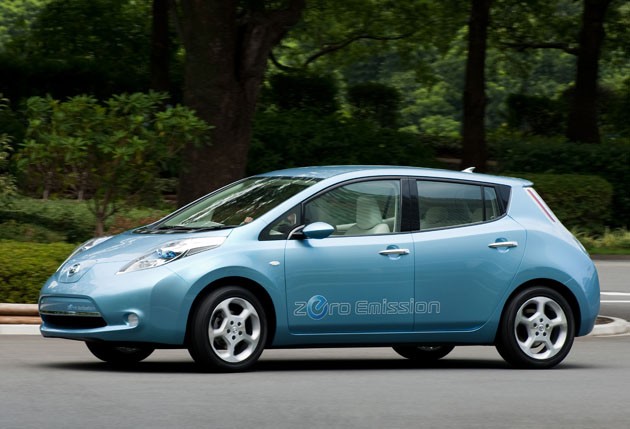Powering society is one of the biggest sustainability issues we as a people face. Energy consumption in a variety of forms has sculpted our society and our way of life. Everything from how we get to work to how we get our food relies heavily on cheap and abundant sources of energy. To date that energy source has been fossil fuels. Although there is a huge amount of work being done on alternative renewable energy sources it doesn’t seem as though fossil fuel is going anywhere quickly. There is a variety of alternative choices people can make to avoid using fossil fuels; however these choices tend to be far greater in cost which is a massive barrier for the average person. Even if the average Joe wanted to be totally environmentally conscious, the shear cost would likely make it impossible for him. Let’s look further at the pros and cons of current energy and the pros and cons of renewable energy sources. Check this link out for very detailed info on North American energy use!!!!
http://www.pi.energy.gov/documents/NorthAmericaEnergyPictureII.pdf
http://www.pi.energy.gov/documents/NorthAmericaEnergyPictureII.pdf
http://www.eia.doe.gov/cabs/Canada/images/tec.gif
Currently oil, coal, and natural gas are used in massive quantities in order to power our lives. Oil is mainly used in the largest quantities in order to allow us to get around. It is actually a little depressing when you think about. Our entire city structure relies on oil, the (poor) design of the suburbs, the sprawling cities; our food coming from thousands of miles away, the list is endless. We are addicted to oil. Why is oil a problem though? Well as with all fossil fuels, in order to harness the potential energy they carry they must be burned. The process of fossil fuel combustion is probably one of the most filthy practices we as humans regularly partake in. The emissions from our cars and power plants are not only full of CO2 which contributes to global climate change, but there are a number of other chemicals that are emitted. SO2 which contributes to acid rain, ozone and NOx which create local air pollution problems such as smog, and also generate particulate matter which contribute to a number of respiratory problems. Not to mention the fact that in order to obtain these fuels requires massive amounts of energy and effort which usually results in extensive environmental degradation; all that just to cover our transport needs, but what about electricity? Check these links out!!
http://www.ucsusa.org/clean_energy/coalvswind/c01.html
http://www.epa.vic.gov.au/air/aq4kids/cars.asp
http://www.ucsusa.org/clean_energy/coalvswind/c01.html
http://www.epa.vic.gov.au/air/aq4kids/cars.asp
ttp:https://blogger.googleusercontent.com/img/b/R29vZ2xl/AVvXsEikh8dEBNPeHIUJ63-sHYb85LOXJ8vKTRFvFQPQ4HnR9r5AcpBUzpRqlbcBd0_5FfPFvDhiv9NVWfJywZTfm3pYMo3mWlnfDe1aXaKWwo4gSeGaa9yKe706NvEeAmCsVH8_cfRhGCoiswc/s1600/british-petroleum-oil-fields-imperialism-iraq-occupation.jpg
 Well in North America most electricity is mostly generated by the combustion of coal, another filthy fuel source. Burning coal emits immense amounts of CO2 and sulphur compounds which contribute to climate change and acid rain. Coal combustion also produces particulate matter which is terrible for human health as stated before. Worst of all coal extraction is devastating natural environments. Entire mountain tops actually removed in order to extract coal for burning. Lastly natural gas is used in the majority of homes that require winter heating and water heating. The CO2 emitted by natural gas use contributes to climate change.
Well in North America most electricity is mostly generated by the combustion of coal, another filthy fuel source. Burning coal emits immense amounts of CO2 and sulphur compounds which contribute to climate change and acid rain. Coal combustion also produces particulate matter which is terrible for human health as stated before. Worst of all coal extraction is devastating natural environments. Entire mountain tops actually removed in order to extract coal for burning. Lastly natural gas is used in the majority of homes that require winter heating and water heating. The CO2 emitted by natural gas use contributes to climate change.All of these fuels contribute to severe environmental degradation. While at the same time they are all finite. This means that there is a limited supply, which means there will be a point when they will run out. Many experts claim that we are at or close to the “peak” of oil and even natural gas. This means that prices are only going to go up from this point on. This means that serious changes need to be made in our energy consumption. These choices should be made while they are still voluntary as opposed to being forced.
So what can be done? In the coming section I will discuss alternatives to the three main uses of energy: transport, electricity and heating. I will also delve into the likelihood of these options being viable in the foreseeable future.
Transportation is a huge issue since we as a society would likely collapse without being able to drive or eat fruit from Chile in the middle of winter. Now aside from the obvious and quite simple solutions of walking, biking or public transportation (which clearly will never become the most popular mode of transport, since that requires a certain level of effort that our society doesn’t seem to be willing to expend. Which may explain the ever growing issue of obesity in North America, but that’s a whole other issue.) There are potential solutions to making our automobiles “petrol free”. I am most certainly pessimistic in most cases, but this topic actually seems like a positive one. Electric cars are on the market! And unlike the early 90’s when they first came out and failed, we actually are in an appropriate political and social climate for EV’s to become popular. Electric vehicles represent the ability to reduce a massive amount of fossil fuels that we as North Americans use.
CHEVY VOLT
In Canada 55% of our energy for transport is used in passenger vehicles. If all those vehicles were electric, we would see a dramatic decrease in fossil fuel consumption. The reason I am optimistic is that only a few years ago hybrids were introduced, and now they are extremely popular. Hopefully the same will happen with full electrics. On the other hand they are very expensive and they are lacking infrastructure such as charging stations. On the pessimistic side however, the number of light trucks (pickup trucks) is increasing more and more each year. It is hard to gauge whether or not electrics will make up a large percentage of the cars on the road any time soon. North Americans love trucks and SUVs, as much as I love the idea that electric vehicles are on the market I have a hard time believing that they are going to save us from our oil addiction.
CHEVY VOLT
http://www.crunchgear.com/wp-content/uploads/2009/09/production-chevy-volt_021.jpg
NISSAN LEAF
http://www.theautochannel.com/news/2010/09/08/495418.1-lg.jpg
In Canada 55% of our energy for transport is used in passenger vehicles. If all those vehicles were electric, we would see a dramatic decrease in fossil fuel consumption. The reason I am optimistic is that only a few years ago hybrids were introduced, and now they are extremely popular. Hopefully the same will happen with full electrics. On the other hand they are very expensive and they are lacking infrastructure such as charging stations. On the pessimistic side however, the number of light trucks (pickup trucks) is increasing more and more each year. It is hard to gauge whether or not electrics will make up a large percentage of the cars on the road any time soon. North Americans love trucks and SUVs, as much as I love the idea that electric vehicles are on the market I have a hard time believing that they are going to save us from our oil addiction.
http://leftwingconspiracy.com/wp-content/uploads/2009/09/motivator73981307.jpg
Electricity is another huge user of fossil fuels. The two solutions to providing enough electricity to the masses that I see working is for massive scale renewable energy like wind or solar farms, or micro generation systems which provide each dwelling with enough power to sustain themselves. The upfront costs involved with each dwelling getting their own solar or a wind system basically nullifies that possibility. The payback period would be too long for most people to put out the upfront capital. Massive solar and wind farms take up huge amounts of land and are at this point inefficient at producing the necessary amounts of electricity compared to the cost of their implementation. These links provide some more background on the issues involved with solar and wind power!!
http://www.weatherquestions.com/Solar-power.htm
http://www.aweo.org/problemwithwind.html
http://www.weatherquestions.com/Solar-power.htm
http://www.aweo.org/problemwithwind.html
http://www.windpowerninja.com/wp-content/uploads/2009/02/texas-wind-farm.jpg
http://www.ontariosolarfarms.com/images/solar-farm.jpg
As for heating homes, there are few alternatives to the natural gas furnace in the truly cold states and provinces. Heat pumps can work in a climate such as Victoria BC, but the rest of Canada gets far too cold to rely on a heat pump. High efficiency pellet stoves could be used however they are unlikely to become popular enough for the majority of people. Geothermal systems would work, if they weren’t insanely expensive and didn’t require the large amount space. I think currently there isn’t a viable alternative to the furnace; rather energy saving retrofits will be the answer. By increasing the efficiency of homes we can save the most energy in terms of heating. This can be done through increasing insulation and installing high efficiency furnaces. MORE LINKS!!
http://www.alternative-heating.com/alternative-home-heating.html
http://www.alternative-heating.com/alternative-home-heating.html
http://mercuryrefrigeration.ca/uploads/images/geo%20graphics/heat%20transfer%20diagram.jpg
I think the take home message here is that, although there are some potentially promising alternative energy solutions on the horizon, the real key to powering the sustainable city will come from the changing of human behaviour. If sustainability is embraced by the masses the transition to clean energy will be much easier. Unless people take it upon themselves to make energy wise decisions the demand will not be great enough to drive the prices of technology down. Reducing our dependency on cars and reducing our energy use are the most important things we can do in terms of ensuring sustainable power and energy.







No comments:
Post a Comment